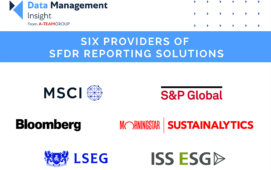
New data reveals how carbon emissions can unlock investment in decarbonisation
By Jan Ahrens, Chief Executive, SparkChange.
There is little doubt global warming presents a catastrophe for humanity, and that it requires unprecedented investment to achieve the goals of the Paris Agreement. McKinsey estimates $9.2trn per year.
When we talk about the financial effects of the climate transition, the narrative is typically dominated by risk, losses and negative impact. Not only is this off-putting – given the finance industry does not wish to invest in catastrophes – but is also a rudimentary way of thinking. Or perhaps, just plain wrong.Indeed, such a transition provides a plethora of opportunities to invest profitably. Entire sectors, companies and regions will thrive in the transition to a low carbon future. There is nothing immoral or wrong about that.
Climate regulation is increasingly designed to create financial benefits if corporates decarbonise, or financial penalties if they do not. An excellent example is compliance carbon pricing: Covering more than 50% of global GDP, these so-called ‘cap-and-trade’ markets are now the preferred option for government’s to regulate greenhouse gas emissions. As a result, they translate decarbonisation policy directly into financial costs and opportunities.
Polluters must buy one carbon allowance for every tonne of greenhouse gas emitted. However, the annual supply of these allowances is fixed and gradually declining. At a glance, this only looks to carry a cost on a company’s P&L (which it does), but when scrutinised in detail with proper financial modelling, a company’s exposure to carbon pricing can have positive effects on P&L. Sophisticated models can factor in subsidies received by a company, its ability to pass-through carbon costs to consumers, or its trading strategies. When viewed holistically, all of this data can explain the effects of changes in carbon pricing.
The Carbon Price Exposure metric has remarkable implications for sustainable investing:
Identify winners in “dirty” sectors and losers in “clean” sectors: Analogous to how a raw material (used in product manufacturing) pushes up the price of the end product, carbon allowances work in much the same way, as the cost of carbon allowances is passed through to the ultimate consumer. Take for example a western European power market: For every € change in the EU Carbon Allowance price, the power price moves as well. This means that carbon efficient producers (e.g. renewable energy producers) profit from a higher carbon price. The same applies for any other market with a commoditised product, so that carbon efficient producers are financially better positioned compared to heavy polluting peers.
Replace “ESG ratings” with a financial metric: The investment industry is hard-wired to financial metrics. Integrating ESG scoring or ratings is incredibly difficult, as they do not translate into a change in P&L. Carbon allowance costs and revenues are easily integrated into discounted cashflow or other financial models. They do not require any expert knowledge on environmental standards, nor subjective judgement.
Manage a carbon risk (properly): So far ESG data has primarily served as a screening tool to reduce “risks”. However, avoiding risk is not in the DNA of the investment industry; it is preferable to understand risk based on data and models, and to manage it. Carbon allowance price exposure enables this kind of risk management, as the carbon allowance price can be hedged – by purchasing carbon allowances as part of an investment portfolio.
Overall, it’s important we use a more balanced narrative around the low carbon transition and sustainable investing. Carbon prices allow for an innovative, forward-looking financial metric that opens up new approaches to sustainable investing. Financial institutions should assess the carbon price exposure of their portfolios, and use that metric to identify opportunities and manage risks in the transition to a low carbon economy.
Subscribe to our newsletter




